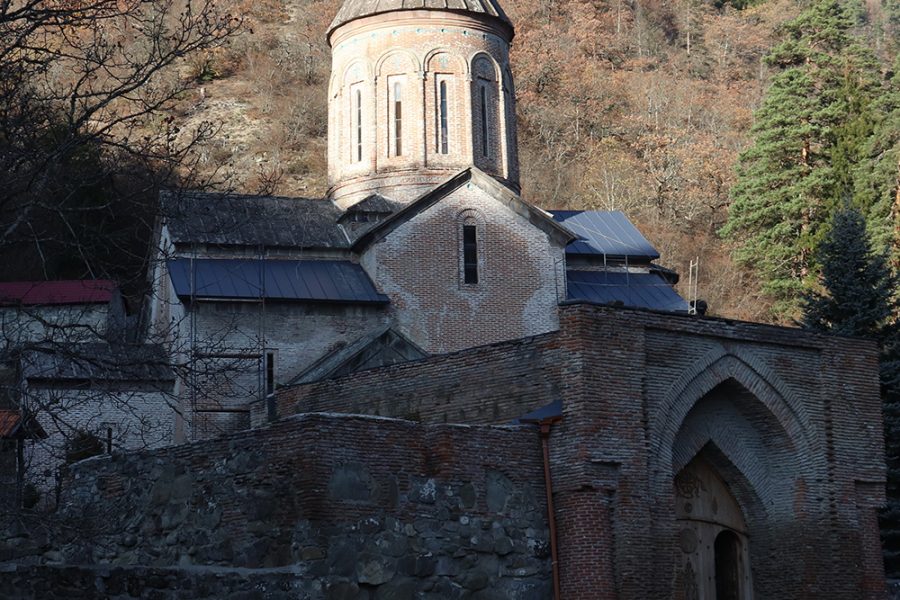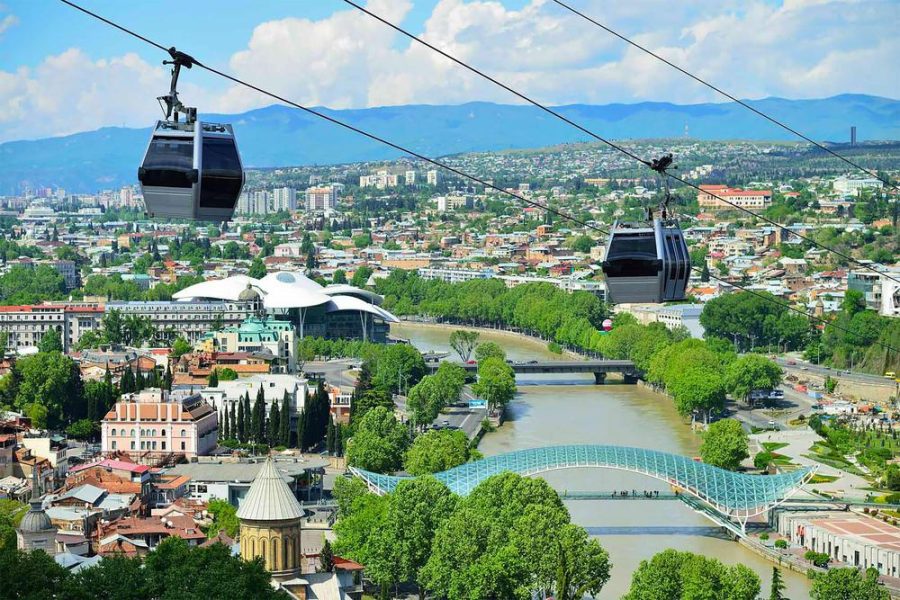Tamakoni Fortress: A Lord’s Stronghold in the Martvili Hills
Hidden in the lush green hills of Martvili, the ruins of Tamakoni Fortress tell a classic story of feudal life in Samegrelo. This was the fortified residence of a local lord, a stronghold from which a powerful family—likely a branch of the Chikovani or Dadiani clans—ruled their domain. A visit to Tamakoni is a journey into the heart of the Megrelian aristocracy, a world of local power, loyalty, and constant vigilance.
Built in the late medieval period, the fortress occupies a strategic hill with commanding views of the surrounding valleys and roads. Its purpose was twofold: to provide a secure and prestigious home for the ruling family and to serve as a military and administrative center for their lands. From this perch, the lord could dispense justice, collect taxes, and rally his men to defend his territory from rivals or foreign threats.
Today, the fortress is a picturesque ruin dominated by the remains of its main tower. Constructed from sturdy local limestone, the surviving walls still evoke a powerful sense of security. It was a self-contained world, with living quarters, storage areas, and likely a small chapel, all protected behind a strong defensive wall. It was a symbol of power etched into the landscape, a clear statement of who was in charge.
Exploring Tamakoni is an off-the-beaten-path adventure for those who want to find the hidden history of the Martvili region. The site is quiet and atmospheric, free from crowds. The climb to the ruins offers beautiful views of the surrounding countryside, a landscape that has changed little since the fortress’s heyday.
Tamakoni Fortress is a powerful reminder of the complex feudal network that defined medieval Samegrelo. It’s a testament to the local lords who were the true pillars of the principality, each ruling their small kingdom from a stone stronghold like this one.
🗺️ Geography & Location
Exact Location:
Tamakoni Fortress is located in the Martvili Municipality of the Samegrelo region, Georgia, on a hill near the village of Tamakoni.
Strategic Placement:
The fortress was positioned to control a local valley and the routes passing through it, serving as the administrative and military center for a feudal estate.
Coordinates:
Approximately 42.4508° N, 42.3019° E.
📖 History & Background
Date of Construction & Origins:
The fortress dates to the late medieval period (16th-18th centuries).
Historical Role:
It was a classic fortified residence (*tsikhe-darbazi*) belonging to a local noble family, likely associated with the ruling Dadiani dynasty or one of its powerful vassal families.
Status:
It is a cultural heritage monument, preserved as ruins.
🏗️ Architecture & Design
Materials Used:
Constructed from local limestone.
Key Features:
- Residential Tower: The ruins are dominated by the remains of a main residential and defensive tower.
- Hilltop Defense: The fortress utilizes the natural defensive advantages of its hilltop location.
- Enclosing Wall: Traces of the outer wall that created a secure courtyard are still visible.
Unique Aspects:
Tamakoni is an archetypal example of a local Megrelian lord’s castle, providing a clear insight into the social and military structure of the region during the late feudal period.
🌟 Cultural & Tourist Significance
A Glimpse into Feudal Samegrelo:
The fortress tells the story of the local aristocracy that formed the backbone of the Principality of Samegrelo.
Hidden Martvili:
For visitors exploring the Martvili area, it offers an authentic historical site away from the main tourist attractions, perfect for those seeking a sense of discovery.
🚶 How to Visit
Best Time of Year to Visit:
The site is best visited from late spring to autumn.
Accessibility:
Access requires a drive to Tamakoni village, which may involve rural roads, followed by a hike up to the fortress hill.




Leave a review